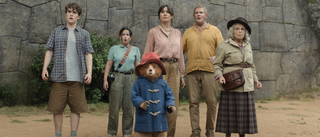Reviews
Latest Reviews

Novocaine Review: As A Jack Quaid Fan, I Wanted To Like His Action Movie Debut Much More Than I Do
By Eric Eisenberg published
Building a strong narrative clearly took a backseat to inventing fun ways to take advantage of the hero’s rare medical condition.

Black Bag Review: I’ve Fallen Hard For Steven Soderbergh’s Sexy And Surprisingly Fun Play On The Spy Game
By Mike Reyes published
I already want seconds from this deviously delicious dinner party.

The Rule Of Jenny Pen Review: I Haven’t Seen A Horror Movie This Genuinely Nasty In A Long Time, And I Love It
By Eric Eisenberg published
An early candidate to be declared the best horror movie of 2025.

Last Breath Review: I Don’t Think A Movie This Inert Qualifies For The Thriller Genre
By Eric Eisenberg published
Not all tales of rescue and defying impossible odds are cinematic unto themselves.

Mickey 17 Review: Bong Joon Ho's Parasite Follow-Up Is Goofy And Smart But Also Flawed
By Eric Eisenberg published
Robert Pattinson delivers a terrific dual performance.

Paddington In Peru Review: I Adore This Indiana Jones-esque Adventure That Also Made Me Feel Warm And Fuzzy
By Sarah El-Mahmoud published
No hard stare needed for this Paddington sequel.

Captain America: Brave New World Review: I’m Officially Worried About The Future Of The Marvel Cinematic Universe
By Eric Eisenberg published
The latest MCU entry is shockingly dull and simple.

Love Hurts Review: Ke Huy Quan's Charm And Skills Get Overshadowed By A Generic Action Movie Story
By Eric Eisenberg published
It’s entertaining but underwhelming, and breezy but limited.
CINEMABLEND NEWSLETTER
Your Daily Blend of Entertainment News


